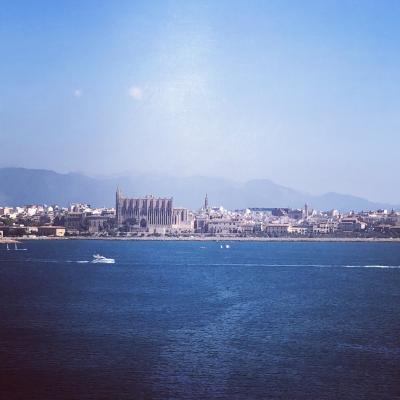How did the Arab rule shape the decorative elements found in Palma's buildings?
Similar Topics
arab rule influence
palma architecture
arab decorative elements
zellij tile mosaics
horseshoe arches
artesonado ceilings
geometric patterns
mediterranean design
The Arab rule left a profound and lasting impact on the decorative elements found in Palma's buildings, marking a distinctive chapter in the city’s architectural heritage. During their control of the Balearic Islands between the 10th and 13th centuries, the Arabs introduced a sophisticated aesthetic that emphasized intricate detail, geometric precision, and an interplay of light and shadow. This artistic influence is evidently reflected in Palma’s enduring use of detailed tile work, carved stone, and stucco decorations, which often feature repeating patterns and arabesques—floral and vegetal motifs stylized into rhythmic, flowing forms. These designs were not merely ornamental but also imbued with symbolic meaning, embodying harmony, infinity, and spiritual reflection.
The use of decorative techniques such as zellij tile mosaics stands out as a key Arab contribution. These colorful, glazed ceramic tiles create vibrant, complex patterns that adorn courtyards, fountains, and facades, transforming everyday urban spaces into visual experiences that engage the senses. Additionally, the incorporation of horseshoe arches and intricately carved wooden ceilings, known as artesonado, further manifest this Moorish legacy. These ceilings often incorporate layered geometric patterns that add depth and texture to interiors, a testament to the skilled craftsmanship developed during the Arab presence.
Moreover, the Arab approach to decoration embraced a blend of functionality and beauty, integrating cooling elements like shaded porticos and courtyards with lush vegetation, which are often framed by decorative motifs. This synthesis of form and function contributed to the creation of comfortable living spaces tailored to the Mediterranean climate, while also fostering an environment of refined elegance. The legacy of Arab decorative art in Palma is therefore visible not only in surviving elements but also in the continued architectural language that emphasizes craftsmanship, detail, and harmony with the environment, offering a tangible link to the city’s diverse cultural history.
The use of decorative techniques such as zellij tile mosaics stands out as a key Arab contribution. These colorful, glazed ceramic tiles create vibrant, complex patterns that adorn courtyards, fountains, and facades, transforming everyday urban spaces into visual experiences that engage the senses. Additionally, the incorporation of horseshoe arches and intricately carved wooden ceilings, known as artesonado, further manifest this Moorish legacy. These ceilings often incorporate layered geometric patterns that add depth and texture to interiors, a testament to the skilled craftsmanship developed during the Arab presence.
Moreover, the Arab approach to decoration embraced a blend of functionality and beauty, integrating cooling elements like shaded porticos and courtyards with lush vegetation, which are often framed by decorative motifs. This synthesis of form and function contributed to the creation of comfortable living spaces tailored to the Mediterranean climate, while also fostering an environment of refined elegance. The legacy of Arab decorative art in Palma is therefore visible not only in surviving elements but also in the continued architectural language that emphasizes craftsmanship, detail, and harmony with the environment, offering a tangible link to the city’s diverse cultural history.
🧩 Related Questions
Related Question
What can travelers expect when participating in Mallorca’s food-related local festivals and celebrations?
Related Question
In what ways do tourists themselves influence crime rates in Mallorca?
Related Question
What significance does the Feast of the Three Kings hold for the display period of nativity scenes in Mallorca?

